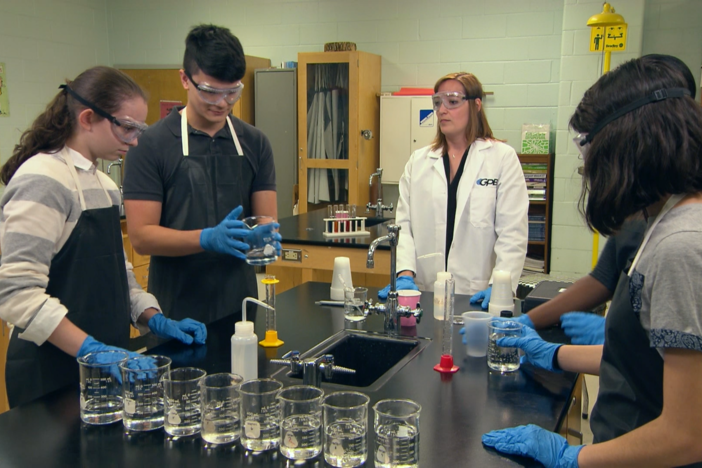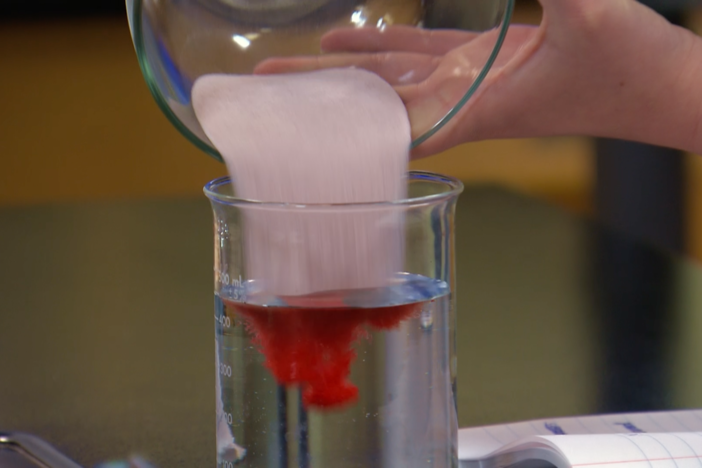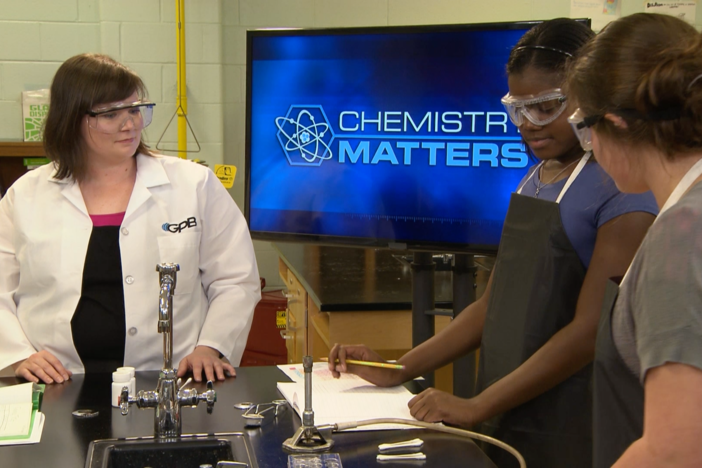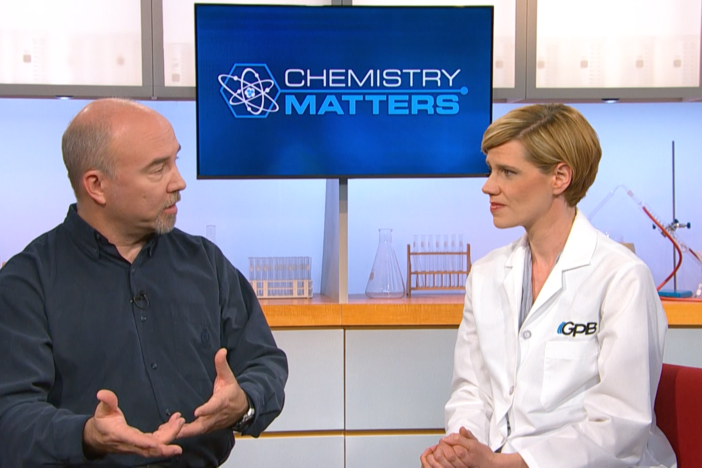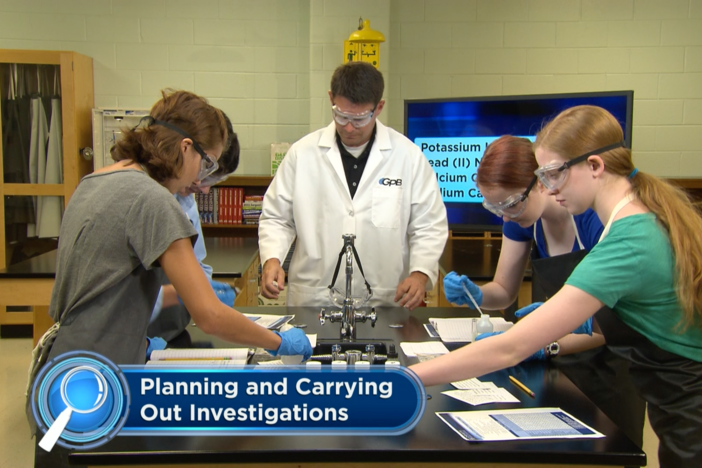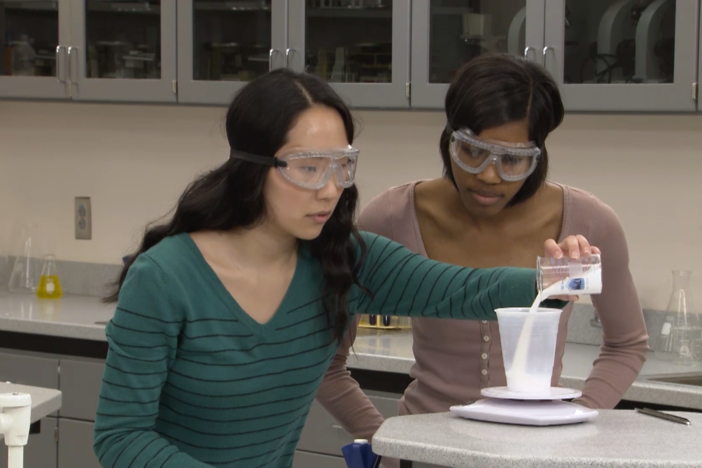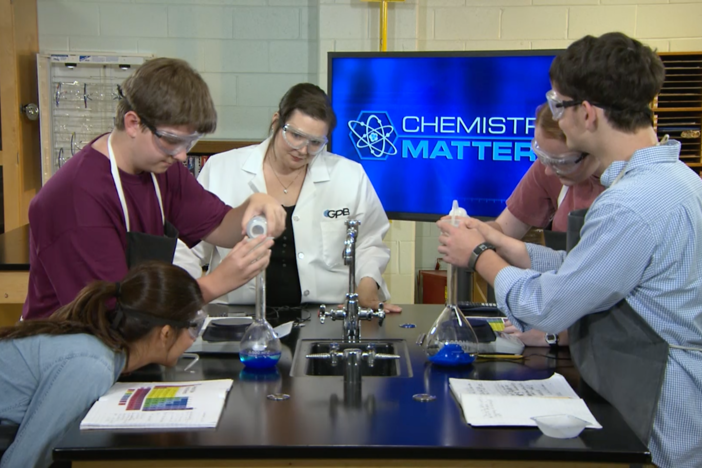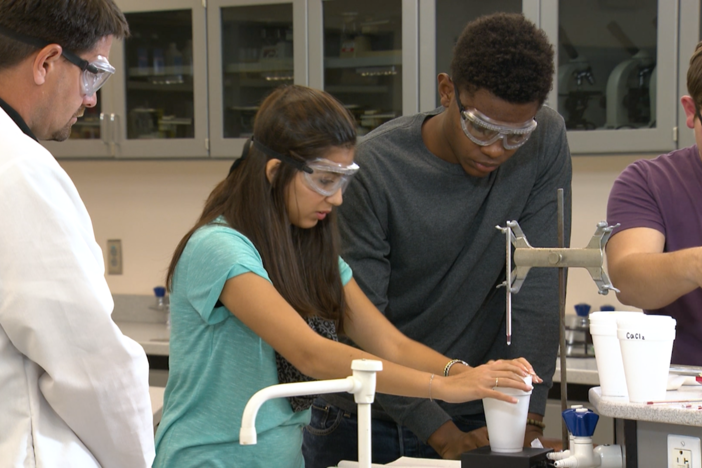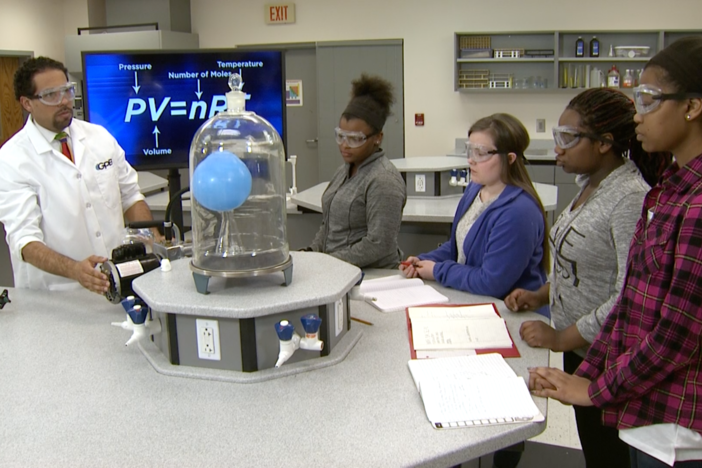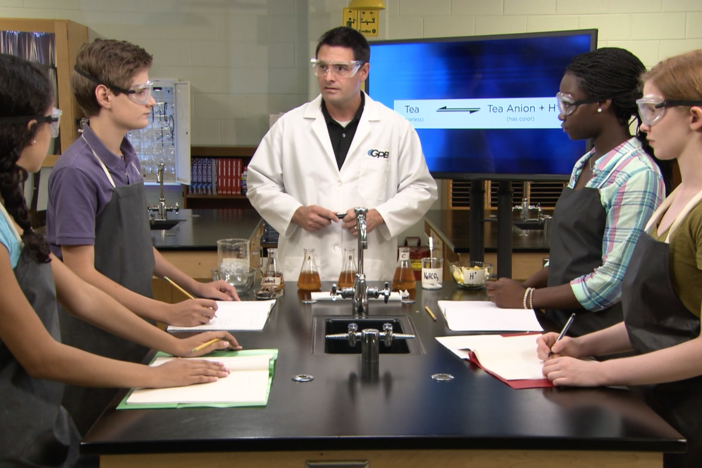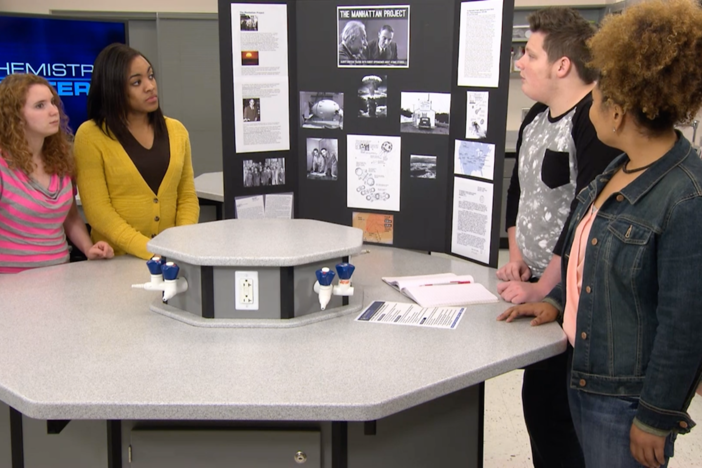Segment F: The Mole and Stoichiometry Review
In this recap of Unit 6, “Stoichiometry,” our host reviews what students learned about using dimensional analysis to solve stoichiometric problems. Students performed calculations and also learned about limiting and excess reactants using s’mores and launching miniature rockets in our lab.
Segment F: The Mole and Stoichiometry Review
In this recap of Unit 6, “Stoichiometry,” our host reviews what students learned about using dimensional analysis to solve stoichiometric problems. Students performed calculations and also learned about limiting and excess reactants using s’mores and launching miniature rockets in our lab.
Science
Obtain, evaluate, and communicate information about the use of the modern atomic theory and periodic law to explain the characteristics of atoms and elements.
Construct an explanation that relates the relative abundance of isotopes of a particular element to the atomic mass of the element.
Obtain, evaluate, and communicate information about how the Law of Conservation of Matter is used to determine chemical composition in compounds and chemical reactions.
Use mathematics and computational thinking to balance chemical reactions (i.e., synthesis, decomposition, single replacement, double replacement, and combustion) and construct an explanation for the outcome of a simple chemical reaction based on the outermost electron states of atoms, trends in the periodic table, and knowledge of the patterns of chemical properties.
Plan and carry out an investigation to determine that a new chemical has been formed by identifying indicators of a chemical reaction (e.g., precipitate formation, gas evolution, color change, water production, and changes in energy to the system).
Use mathematics and computational thinking to apply concepts of the mole and Avogadro's number to conceptualize and calculate
- percent composition
- empirical/molecular formulas
- mass, moles, and molecules relationships
- molar volumes of gases
Use mathematics and computational thinking to identify and solve different types of reaction stoichiometry problems (i.e., mass to moles, mass to mass, moles to moles, and percent yield) using significant figures.
The Chemistry Matters teacher toolkit provides instructions and answer keys for labs, experiments, and assignments for all 12 units of study. GPB offers the teacher toolkit at no cost to Georgia educators. Complete and submit this form to request the teacher toolkit. You only need to submit this form one time to get materials for all 12 units of study.
